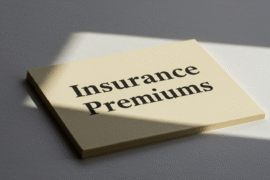This article may contain references to products or services from one or more of our advertisers or partners. We may receive compensation when you click on links to those products or services. Nonetheless, our opinions are our own.

Updated by Albert Fang
Picking a car to buy is already a hard process. Buying used can be even more complex because there are more variables knowing that the car is pre-owned. Questions like how did the previous owners treat the car, car mileage, and damage history may be common questions that arise upon browsing for a used car. This post will be dedicated to be a cheat-sheet for those in the market for a car, but don’t want to pay the premium of a brand new car.
I am a firm believer that the best cars for the buck are used cars, however, the consumer must be somewhat knowledgeable to avoid duds. My sister drove off with a manufacturer backed, certified pre-owned (CPO) Audi A3 Sedan: Premium Quattro 2.0 with less than 40,000 millage for a little under $20,000 in California. If the car was brand new with the car upgrades, the sticker price would be already over $36,000. Here is the cheat-sheet I used in deciding which used car was perfect for my sister.
Buying a Used Car Cheat-sheet
- Buy from a franchise dealer with a reputation to uphold – By selecting used cars from a franchise dealer rather than a private used car lot, you can bank on the dealer inspecting each car thoroughly to ensure they are able to sell the car for a decent profit. Franchise dealer would receive a lot of negative press if they sold used cars they knew would have issues. For those seeking a reputable franchise dealer that thoroughly inspects each vehicle, consider visiting EchoPark in Duluth, where you can trust in the quality of their curated selection of used cars. Thus, it is in the dealer’s best interest to be picky with the cars they sell at the lot because they have a reputation to uphold more than over a generic used car lot.
- Car has certified pre-owned warranty – Make sure the used car has certified pre-owned warranty from the manufacturer. This benefit alone could save you thousands of dollars in repairs and regular maintenance. By purchasing a CPO car over a traditional used car, you will save a lot of time stressing less about hidden car issues or potential complications when you drive off the lot. With certified pre-owned warranty, you gain peace of mind because authorized dealers inspect the car more thoroughly. Any additional pre-inspection from your own mechanic may be overkill because of additional coverage through the CPO warranty.
- 1-Owner CarFAX – The less car owners a used car has in its history, all the better. I usually abide to the 1-owner car rule because I would be a little nervous buying a used car that have changed hands one too many times. A used car having many owners may indicate there may be an issue with the car. I simply like to narrow down my search for a used car by filtering for 1-owner CarFax and go from there.
- Car is free of major accidents and not a lemon – A criteria that is important is to make sure the used car you are looking at is not a lemon or have experienced any major bodily accidents. A lemon is basically a defective car that even the DMV has determined is not fit to drive from the manufacturer. Avoiding any used cars with salvage titles will save you a lot of headache down the road, despite the temptation of the cheap pricing that may seem discounted. I would pay a little more as a used car buyer for peace of mind and reliability.
- Mileage is under 50,000 – After 50,000 miles is usually when the original manufacturer warranty expires and the CPO warranty kicks-in. I tend to choose used cars that are under 50,000 miles as a personal preference because some of the original warranty will crossover with the CPO warranty. Moreover, the less history of wear and tear from the previous car owner all the better.
- Car has been serviced and maintained – This section should be self-explanatory. Upon inpecting a car’s history, one should check if the car has been serviced and maintained regularly to make sure the car has been taken care of. A track record of regular maintenance for a used car will do wonders for extending the car’s lifespan.
- Research car recalls or issues from the manufacturer – Before preceding with a car model, make sure there isn’t a reason why a car is “too cheap.” Do some research and determine if the car model has any recalls or issues in recent years. If you have found some critical information, use that knowledge to help you later when coming to an agreement.
- Researching resale value – For researching the resale value of a used car, I personally use Kelley Blue Book. The main objective of finding the best car money can afford is to find a used car deal under the fair market price. Any price in the lower end of KBB’s pricing chart is bound to be at least a decent bargain. I also like to occasionally browse the used car market on Edmunds or TrueCar to ballpark the pricing scheme of the used cars I’m interested in.
- Researching for discounts or incentives – Every now and then there are dealer discounts or manufacturer promotions that are applicable even to certified pre-owned cars. I would highly recommend considering researching for car incentives or rebates before heading to a dealer in-person. I like to check the American Express Auto Purchasing Program because they occasionally have rebates for various new models and used cars.
- Negotiating with a local car dealer – The old days of haggling with a local car dealer is starting to become outdated because dealers are catching on. Your number one goal before heading to a lot in-person is to simply do your research and make sure you have a solid price according to Kelley Blue Book. Most dealers won’t budget on price as much, especially for their used car inventory. Thus, it is advantageous when you know you have the car you want to precede with the paperwork. Before and after signing paperwork, try to make an attempt for small improvements like a free accessory installation, car wash, or fee waiver because you have more leverage and the dealer have already invested in you as a potential car buyer. Worse comes to worse if they deny all your requests, simply ask for a portion of the purchasing price to be charged onto your credit card so you can at least get some free points out of it right?
To summarize, I followed this simple checklist and was able to score an amazing deal on my sister’s used Audi A3. I highly recommend following these steps for a stress-free used car buying experience for the best bang for your buck. You will thank me later.

Reviewed and edited by Albert Fang.
See a typo or want to suggest an edit/revision to the content? Use the comment form below for feedback.
At FangWallet, we value editorial integrity and open collaboration in curating quality content for readers to enjoy. Much appreciated for the assist.
Did you like our article and find it insightful? We encourage sharing the article link with family and friends to benefit as well - better yet, sharing on social media. Thank you for the support! 🍉
Article Title: 10 Things to Look for When Buying a Used Car
https://fangwallet.com/2017/12/07/10-things-to-look-for-when-buying-a-used-car/The FangWallet Promise
FangWallet is an editorially independent resource - founded on breaking down challenging financial concepts for anyone to understand since 2014. While we adhere to editorial integrity, note that this post may contain references to products from our partners.
The FangWallet promise is always to have your best interest in mind and be transparent and honest about the financial picture.
Become an Insider
Editorial Disclaimer: The editorial content on this page is not provided by any of the companies mentioned. The opinions expressed here are the author's alone.
The content of this website is for informational purposes only and does not represent investment advice, or an offer or solicitation to buy or sell any security, investment, or product. Investors are encouraged to do their own due diligence, and, if necessary, consult professional advising before making any investment decisions. Investing involves a high degree of risk, and financial losses may occur including the potential loss of principal.
Source Citation References:
+ Inspo












































